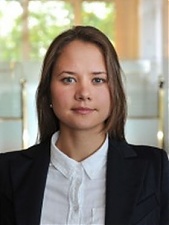Analytics, Banks, Direct Speech, Economics, Financial Services, GDP, Latvia
International Internet Magazine. Baltic States news & analytics
Thursday, 25.04.2024, 22:20
In the third quarter of 2016 the Latvian current account surplus was 93.4 mil. euro
 Print version
Print version |
|---|
The third quarter was unique in recent times, posting a
positive goods and services balance (1.5% of GDP), indicating an excess of
goods and services exports over imports. On the one hand, such data are
pleasing, but on the other hand, the positive balance has formed on the account
of shrinking imports. This was not happening because imports had been replaced
by goods produced in the domestic market but because of the stagnating oil
prices, weak demand for raw materials, which reflects a weak foreign demand and
insufficient investments in production. The formation of the surplus was also
fostered by the increasing services exports.
In the third quarter of this year, the deficit in the goods
balance dropped year-on-year, and was at 390.1 mln euro (6.1% of GDP).
This development resulted from the increase in goods exports by 0.6%, which was
substantially exceeded by the drop in imports by 5.1%. Imports continue to
shrink for such categories of goods as mineral products, mechanisms, electrical
equipment and optical equipment and mechanisms. This development is an
illustration for the above mentioned factors: stagnation in oil prices, slow
economic development in foreign markets, which has a negative effect on
domestic production and thus the demand for raw materials imports and
investment, for instance, in production equipment. Even though goods exports
have remained close to the level of the previous year, positive performers
were, for instance, grain and vegetable products, chemical industry products
and food industry products.
The positive balance of services was 485.9 mln
euro (7.6% of GDP), and year-on-year, it has increased. The changes resulted
from an increase in telecom and computer services granted to non-residents and
an increase in construction services.
A negative contribution was continued to be made by the drop
in rail and transport by sea services, for which the increase in automobile
transport services failed to compensate. Revenue from foreign visitor stays in
Latvia has dropped. This could be explained by the base effect from the higher
expenditures by foreign visitors last year, when a number of events took place
around this time in Riga in relation to Latvia's presidency of the European
Union (EU).
According to the Central Statistical Bureau data, the number
of foreign guests and the length of their stay in Latvian tourist
accommodations in the third quarter were on the rise. This was mostly on the
account of the influx of visitors from the United Kingdom, the United States
and Spain. The number of visitors from Russia has remained at the level of the
previous year. Tourism industry representatives evaluate this dynamic as very
positive, given that no events of international significance that would match
the ones during the previous two years, which fostered an increase both in the
number of visitors and revenue, have taken place in Latvia this year.
In the third quarter of 2016, the primary
income account balance was -24.8 mln euro or 0.4% of GDP. The inflows
of EU funds were lesser than in previous quarters (28.4 mln euro or 0.4% of
GDP). The secondary income surplus was 22.5 mln euro or 0.4%
of GDP. The influx of EU funds was 19.6 mln euro or 0.3% of GDP.
The capital account in the third quarter was at
-2.4 mln euro or 0.04% of GDP. This resulted from the negligible influx
of EU funds during this quarter.
The cross-border flows of finances in the financial
account in the third quarter of 2016 were affected by decisions both
in the private and public sectors. In total, assets abroad shrank by 718.9 mln
euro (11.2% of GDP) and liabilities to non-residents diminished by 769.5 mln
euro (12.0% of GDP).
The largest cross-border financial flows in the private
sector were the drop in credit institution deposits with foreign banks (1.3
bln. euro or 19.7% of GDP in all) and the decrease in credit institution
portfolio investments abroad (301.6 mln euro or 4.7% of GDP). This resulted
from the drop in non-resident deposits in Latvia in the amount of 822.7 mln
euro (12.8% of GDP). This development was fostered by such factors as the
stricter demands for the prevention of legalization of funds obtained through
criminal activity in Latvia and the weak economic growth in Russia. The drop in
credit institution deposits is also an illustration for the regular interbank
transactions, which are affected by decisions by groups of banks on liquidity
placement within the group.
The financial flows determined by the public sector
decisions were related to the participation of Latvijas Banka in the asset
purchase programme within the Eurosystem framework. In implementing the
government bond purchase programme, the most important transactions on the
assets side were the investments by Latvijas Banka in debt securities (392.5 mln
euro or 6.1% of GDP).
Financial transactions in euro within the TARGET2 payment
system framework are registered accordingly also on the liabilities side of the
financial account and, since the incoming influx of money in euro (for
instance, the drop in credit institution deposits and portfolio investments
abroad) slightly exceeded the outgoing foreign payments in euro (the largest
ones of those in this period were related, for example, with the investments of
the central bank in debt securities), the foreign liabilities dropped in the amount
of 30.5 mln euro (0.5% of GDP).
Foreign direct investment (FDI) flowed into
Latvia in the amount of 233.3 mln euro (3.6% of GDP). The most substantial FDI
inflows were in the financial and insurance activities and in retail trade,
construction and information and communication service activities. By country,
the largest FDI inflows came from Austria, Estonia, Sweden and Lithuania.








 «The Baltic Course» Is Sold and Stays in Business!
«The Baltic Course» Is Sold and Stays in Business!

